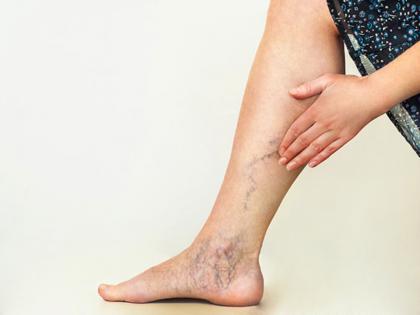What Your Legs Are Telling You: 5 Symptoms That May Signal Vein Disease
By Lokmat English Desk | Updated: July 3, 2025 16:56 IST2025-07-03T16:56:04+5:302025-07-03T16:56:55+5:30
When our body is not well or something is wrong then it often send signal to us. Nowadays various ...

What Your Legs Are Telling You: 5 Symptoms That May Signal Vein Disease
When our body is not well or something is wrong then it often send signal to us. Nowadays various problems related to health are surfacing. Some illness are such that we don't even know that it exits in our body and vein-related problem is one of them. Vascular surgeon and varicose vein specialist Dr. Sumit Kapadia says that vein problems have become very common and if not treated on time, they can take a serious form. In such a situation, let's look at 5 signs of veins that should not be ignored at all.
Continuous pain in legs: If you have constant pain in your legs after standing or sitting for a long time, or feel heaviness, then be careful in time. Because this can be an early sign of Venous Insufficiency or Varicose Veins. This shows that the blood flow in your veins is not going smoothly.
Swelling in the legs: If you always have swelling, especially in the lower part of the legs, this can be a sign of poor blood circulation or blood accumulation in the veins. People often mistake this for fatigue, but it can be a sign of an internal problem.
Varicose or Spider Veins: We often think of varicose veins or spider veins as a beauty problem. But if the veins are painful or swollen, it can be a sign of a disease of the veins. This shows that the veins are not working properly.
Wounds take time to heal: If the wounds on the legs do not heal for a long time, this can be a sign of Advanced Vein Disease. In this case, you should see a doctor in time and get the right treatment.
Also Read: Struggling With PCOS Weight Gain? Here’s How You Can Lose Weight Naturally
Changes in skin color: If the skin color on the lower legs is brown, purple or red, or if the skin is thickened, this can be a sign of Chronic Venous Insufficiency or venous ulcers. This is a sign that the skin is affected by blood pooling in the legs.
Open in app